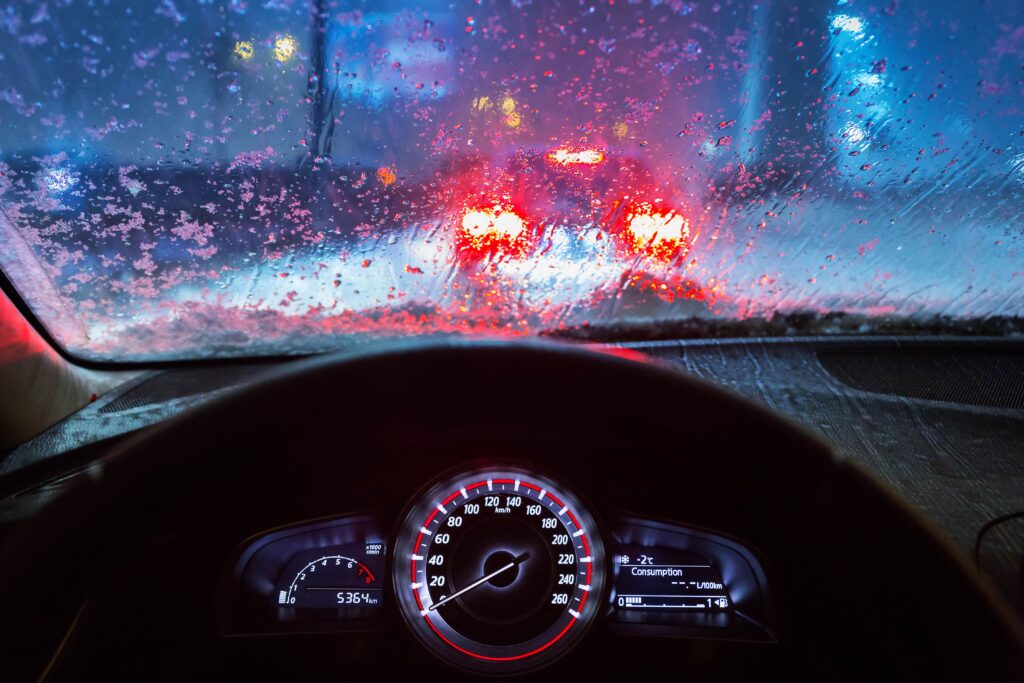Texas weather is unpredictable. One second it is 70 degrees and sunny, and then it is 40 degrees and rainy out of nowhere. Sometimes figuring out what the weather will do next is a guessing game that the weatherman can’t even win. That is why Texans need to be prepared to drive in any weather condition.
Here are a few tips to help you prepare to drive in any type of weather that Texas throws at you.
Driving in the Rain:
Rain is not an uncommon occurrence here in Texas, so you may already know all the dos and don’ts of driving in the rain. But it’s helpful to refresh your mind every once in a while to keep you and everyone on the road around you safe.
- Check the weather before heading out. Know what to expect before getting in the car. This way, you know you have everything you need to drive safely through the rain.
- Check your windshield wipers. Driving in the rain is dangerous already, and being unable to see makes the situation even worse. So be sure your windshield wipers are working before leaving.
- Turn your headlights on. This will make it easier to see and navigate your car on wet roads.
- Do not speed! Drive cautiously and at a safe speed to prevent accidents and hydroplaning.
- Avoid using cruise control. In the instance of hydroplaning, cruise control can make a bad situation worse and may cause your car to speed up.
- Steer clear of water build-up and large puddles. Driving through large water patches can cause your car to hydroplane. Be sure to try and avoid hitting these spots in the roadway.
- If hydroplaning, do not break or accelerate suddenly. If you start to hydroplane, be sure to remain calm and not panic.
Driving on Ice:
Let’s face it; Texas doesn’t get snow. It gets ice. These icy conditions can be hard to navigate, especially when it is your first time. That is why it is good to prepare and have a basic understanding of what to do in this situation.
- Check the road conditions before going out. If the roads are icy, stay wherever you are and wait until the roads clear up. If this is not an option and you need to go, proceed with caution.
- Pack a blanket and emergency supplies. If an accident occurs, you want to have everything you need to keep yourself comfortable and safe. Being trapped in a cold car on the side of the road waiting on a tow truck is not fun. Be sure to bring a blanket to keep warm and some emergency snacks to hold you over until help arrives.
- Do not speed! You need to reduce your speed and go slower than usual. Yes, it will take longer to get where you are going, but it will help prevent you from crashing.
- Slowly accelerate. You can help prevent your car from sliding on the ice by pressing the gas pedal slowly.
- Follow cars at a further distance leaving enough space to brake. Try to double your typical follow distance of the vehicles in front of you to help prevent you from sliding into them.
- Avoid using cruise control. Similar to driving in the rain, if you use cruise control and begin to slide, it can cause your car to speed up. The opposite of what you want.
- Steer clear of steep hills. If you attempt to go up a hill, there is a big possibility that you will slide. This can lead to an accident, which no one wants. That is why it is best to find a safer route to your destination.
- If you start to slide, do not brake suddenly. One’s first instinct when their car is sliding is to brake quickly. Avoid doing this, and instead, remain calm so you can fix your car’s orientation quickly and safely.

